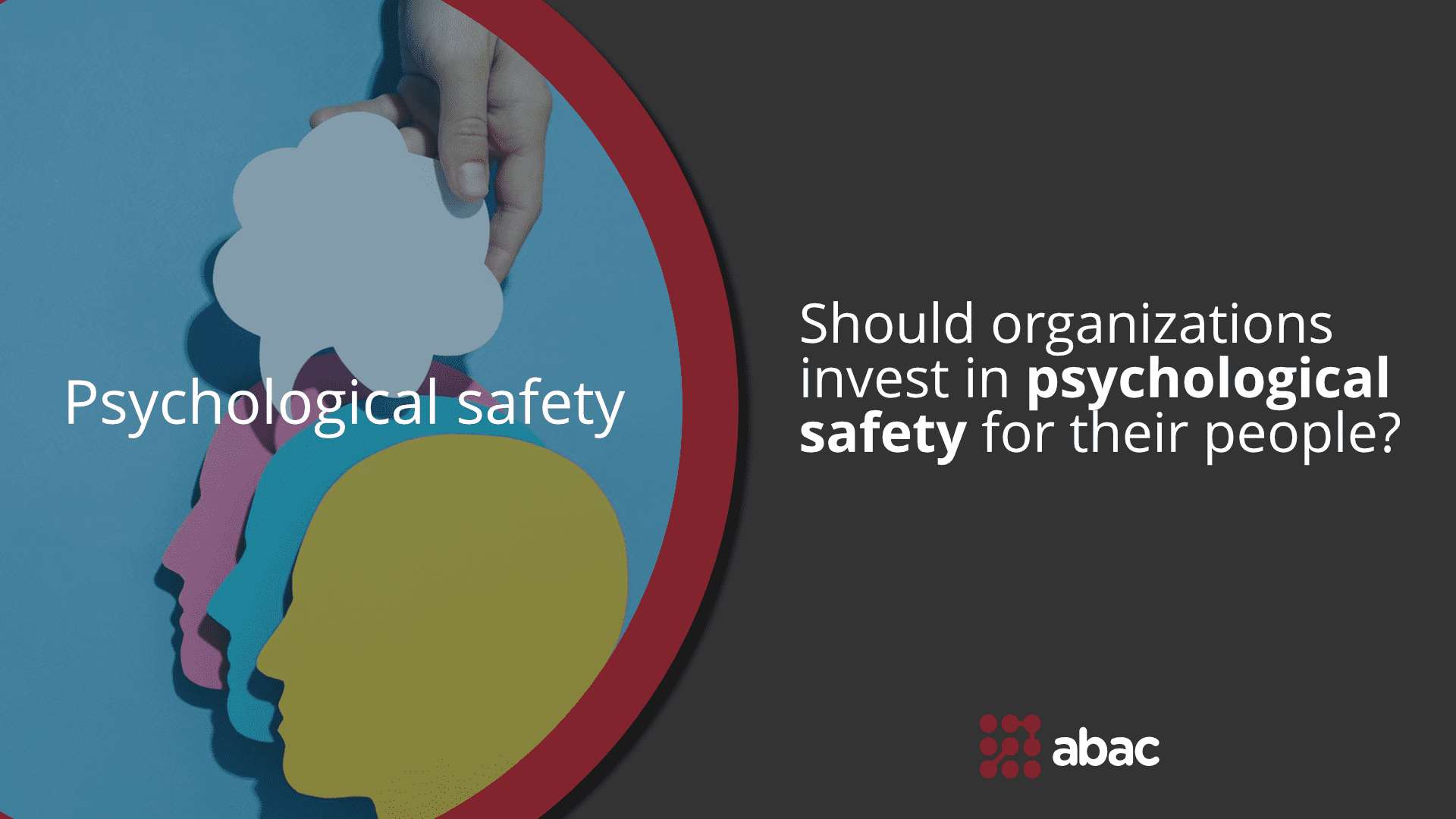This is not an article about psychological safety as a safe corner where you can go and pretend you are invisible until the problem goes away. Rather, it is about a phenomenon that is or is not present among teams. Be it a team of developers or marketing specialists.
In this article, we will approach the term psychological safety as a value. When it comes to company culture, people often talk about three key ingredients: strong mission and vision; individual values aligning with company values; the prospect of professional growth. But we would like to introduce you to psychological safety.
The term was introduced by Amy Edmondson from Harvard Business School as a belief that no member of a team will be punished or humiliated for speaking up his ideas, questions, concerns or mistakes (1999).
In the workplace, psychological safety creates a shared belief that the team is safe for interpersonal risk taking. It’s a shared belief held by members of a team that others on the team will not embarrass, reject, or punish you for speaking up.
Psychological safety at work doesn’t mean that everybody is nice all the time. It means that you embrace the conflict and you speak up, while appreciating and capitalizing the differences of perspective.
According to a 2017 Gallup survey, 3 out of 10 employees strongly agreed that their opinions don’t count at work. But organizations benefit from diversity of thought, benefit from each person’s input and history.
What does psychological safety in a team look like?
- Team members understand each other’s capabilities and interests – with honest, timely and constructive communication is essential to an Agile delivery team. Team members must feel safe to offer constructive advice when they see errors or defects in a product or process and also to be honest about their own progress or lack thereof, because other team members depend on them and the software they’re delivering.
- Team members trust one another – teams and their leaders innovate faster through trust and better information sharing.
- Team members are authentic and allow others to be their authentic selves too, whether in meetings or private conversations – that means being able to show and employ one’s self without fear of negative consequences of self-image, status or career.
- Team members ask questions, provide feedback and then listen actively and intently to understand feelings and facts. Also, they ask for help, and freely offer help when asked to or when they see a colleague going down the wrong path.
- Team members agree to share failures, recognizing that mistakes are an opportunity to learn and grow – they embrace expertise among many, versus a single “hero” mentality.
Psychological safety and Agile ceremonies: what kind of a combo is that? At first glance, the mention of psychological safety can seem out of place for business leaders – but it’s actually one of the four pillars of Modern Agile methods:
- Make People Awesome
- Make Safety a Prerequisite
- Experiment & Learn Rapidly
- Deliver Value Continuously
Psychological safety and Agile actually complement each other. They are both essential approaches to being comfortable with feedback, change, uncertainty and even fear.
From a leader’s point of view, there are three exemplary behaviors that one can adopt in order to ensure psychological safety:
- Frame the work as a learning problem and not an execution problem – this way, people will feel more relaxed and confident in their way of doing things;
- Acknowledge your own fallibility – we are all human;
- Model curiosity and ask lots of questions – create an environment that promotes questioning and the ping-pong of ideas.
Up to a point, it is the leaders who significantly impact and create psychological safety. The ability for your people to come to work and speak out about what they know and about what they do not know, or what they see or what they worry about is absolutely mission critical to your success in business. It makes a big difference when leaders acknowledge, when they say: “I see from what I did that I made it difficult for you to come to me”.
The dilemma with psychological safety is that it is reflected in the absence of communication. How do you notice the invisible then? In a team with low degrees of psychological safety, processes and tools become more important, as they compensate for a lack of quality communication and trust between team members.
In an unsafe environment, there is a culture of finger pointing and shaming individuals or teams for doing the ‘wrong’ thing; there is a culture of “shooting the messenger”, the colleague that communicates; feedback is not frequently given or requested; team members don’t know one another personally, just professionally.
Amy Edmondson and Google (in their study called Project Aristotle) both found in separate studies that teams which made more mistakes were actually more successful than others. Why? Because creating an environment in which people feel comfortable to take risks is key to fostering innovation in the workplace. Also, leaders who create psychologically safe work environments are less likely to experience employee turnover on their teams.
In the end, psychological safety is as much about unlocking the full potential of your teams as it is about honestly recognizing the interdependent and uncertain nature of the challenge ahead. Also, everyone’s voice matters! There is always more to be said.
Bonus:
Curious to find out the level of psychological safety among your team? If so, use this link to get inspiration for the relevant questions you could ask.
Sources:
- https://www.forbes.com/sites/googlecloud/2021/08/27/safe-space-how-psychological-safety-can-make-your-team-more-effective/?sh=586e38b64231
- https://www.ccl.org/articles/leading-effectively-articles/what-is-psychological-safety-at-work/
- https://www.predictiveindex.com/blog/psychological-safety-in-the-workplace/
- https://www.impraise.com/blog/what-is-psychological-safety-and-why-is-it-the-key-to-great-teamwork
- https://mentormate.medium.com/building-better-software-through-psychological-safety-in-the-workplace-793d1b9004d8
- https://www.psychsafety.co.uk/psychological-safety-and-agile-teams/
- https://www.usehaystack.io/blog/developers-defensive-culture-psychological-safety
- https://www.nytimes.com/2016/02/28/magazine/what-google-learned-from-its-quest-to-build-the-perfect-team.html
- https://www.betterup.com/blog/why-psychological-safety-at-work-matters
- https://www.onirik.com.au/psychological-safety
